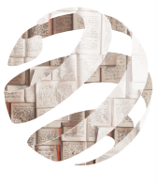
Exploring Complex Learning Spaces
Abstract
Keywords
Full Text:
Project Outcomes - PDFReferences
Avalos, M. & Winslade, J. (2010) ‘Education as a ‘line of flight’’. Explorations: An E-Journal of Narrative Practice, 1, pp.70-77. VIEW ITEM
Davis, B. & Sumara, D.J. (2006) Complexity and education: inquiries into learning, teaching, and research. London. Routledge. GS SEARCH
Deleuze, G. & Guattari, F. (1987) A Thousand Plateaus. London, Continuum. GS SEARCH
Dovey, K. (2010) Becoming Places: Yrbanism/Architecture/Identity/Power. London: Routledge. VIEW ITEM
Fonseca, J. (2002) Complexity and Innovation in Organizations. London: Routledge. https://doi.org/10.4324/9780203279267
Fullan, M. (1999) Change Forces: The Sequel. Philadelphia, Falmer Press. Jamieson, P.J.; Fisher, K.; Gildng, T.; Taylor, P.G. & Trevitt, A.C.F. (2000) ‘ place and space in the design of new learning environments’ higher education research and development, 19 (2), pp.221-237. https://doi.org/10.1080/072943600445664
Jamieson, P.J.; Fisher, K.; Gildng, T.; Taylor, P.G. & Trevitt, A.C.F. (2000) ‘ place and space in the design of new learning environments’ higher education research and development, 19 (2), pp.221-237. https://doi.org/10.1080/072943600445664
JISC (2006) Designing spaces for effective learning: a guide to 21st-century learning space design, Bristol, HEFCE. VIEW ITEM
Johnson, C. & Lomas, C. (2005) ‘Design of the Learning Space: Learning and Design Principles’ Educause Review, July/August. pp. 16-28. VIEW ITEM
Johnson, S. (2002) Emergence: The Connected Lives of Ants, Brains, Cities and Software. New York: Scribner. GS SEARCH
Morrison, K. (2002) School Leadership and Complexity Theory. London: Routledge. GS SEARCH
Oblinger, D.G. (2006) Learning Spaces, Washington D.C., Educause. VIEW ITEM
Savin-Baden, M. (2007) Learning Spaces. Creating opportunities for knowledge creation in academic life. Maidenhead: McGraw Hill. GS SEARCH
Stacey, R.D. (1996) Complexity and Creativity in Organizations. San-Francisco: Berrett-Koehler. GS SEARCH
Stacey, R.D. (2001) Complex Responsive Processes in Organizations: Learning and Knowledge Creation. London: Routledge. . GS SEARCH
Williams, R.; Karousou, R. & Mackness, J. (2011) ‘Emergent Learning and Learning Ecologies in Web 2.0’ International Review of Research in Open and Distance Learning, 12(3), pp. 39-59. https://doi.org/10.19173/irrodl.v12i3.883
Wood, P.; Warwick, P. & Cox, D. (2010) ‘Developing learning spaces in higher education, an evaluation of experimental spaces at the University of Leicester’ ECER Conference, Helsinki.
DOI: https://doi.org/10.29311/jlthe.v1i1.2591
Refbacks
- There are currently no refbacks.
Copyright (c) 2018 Philip Wood, Paul Warwick

This work is licensed under a Creative Commons Attribution 4.0 International License.



